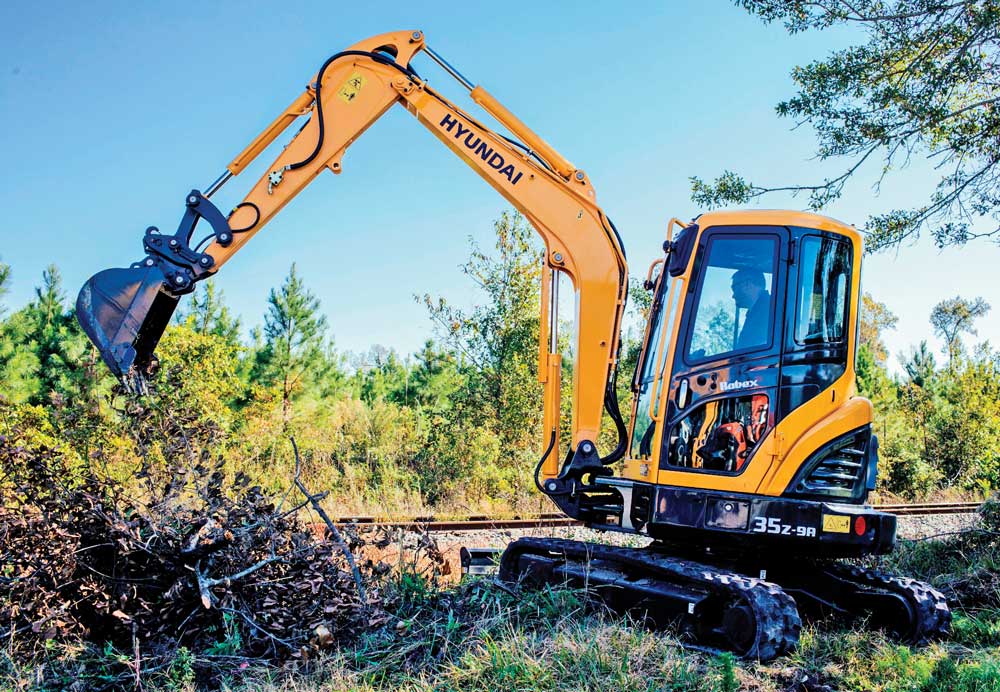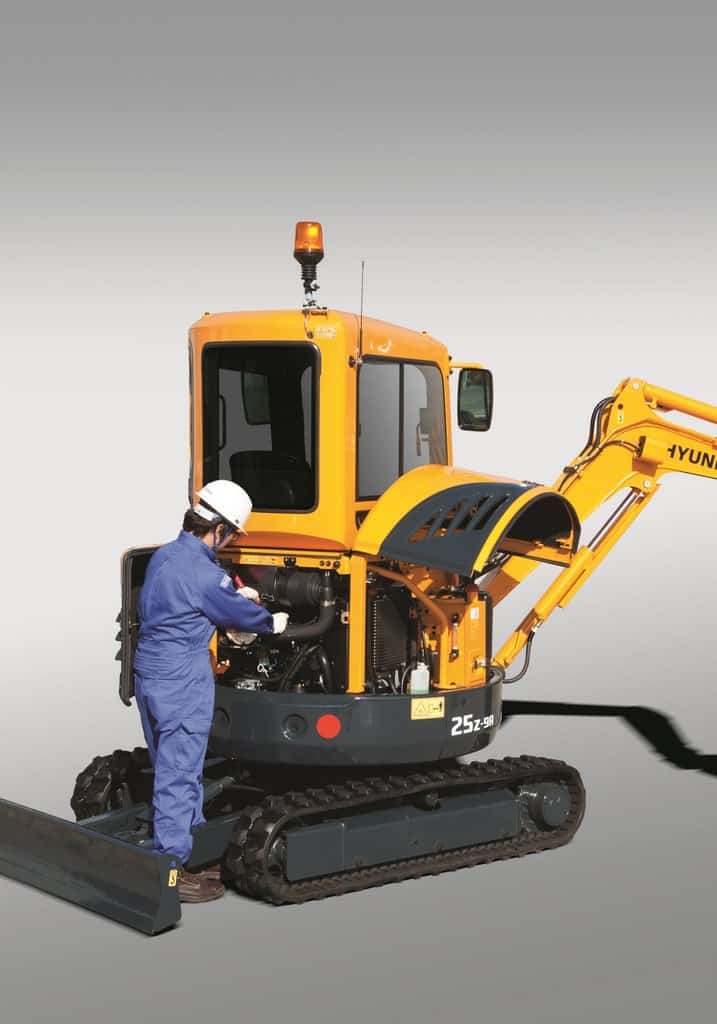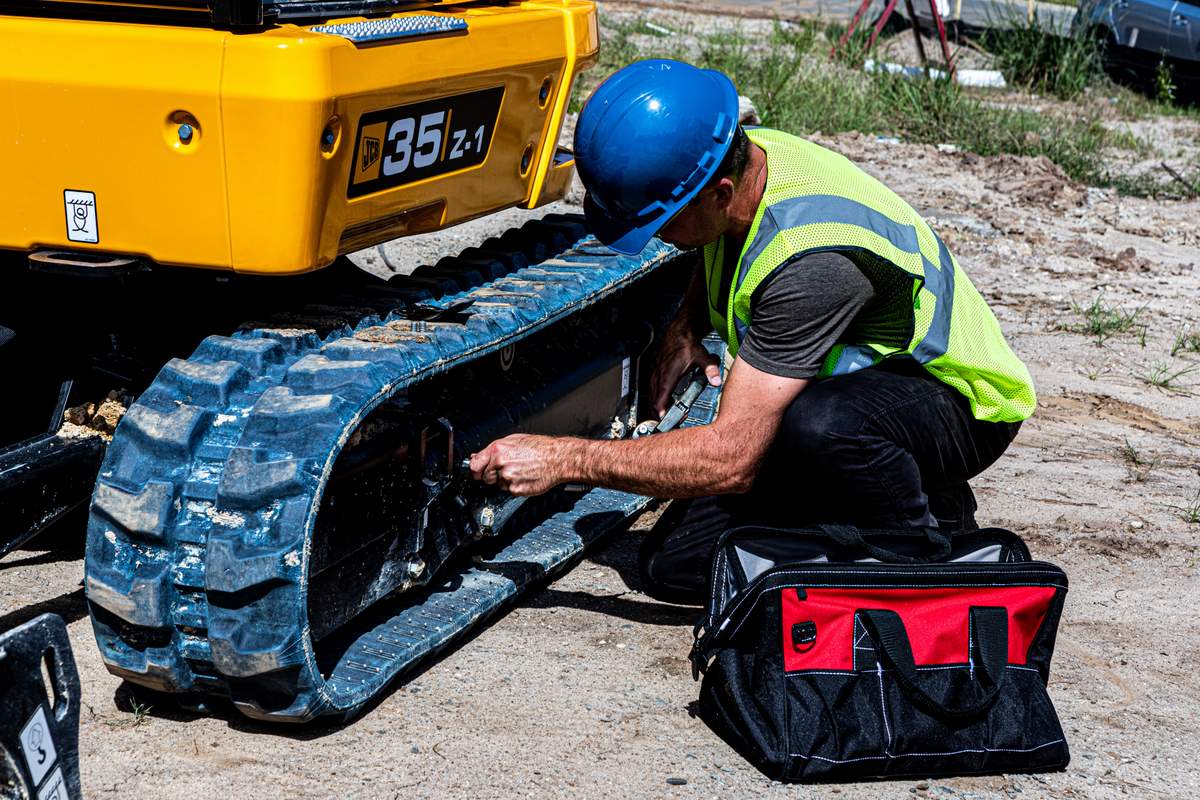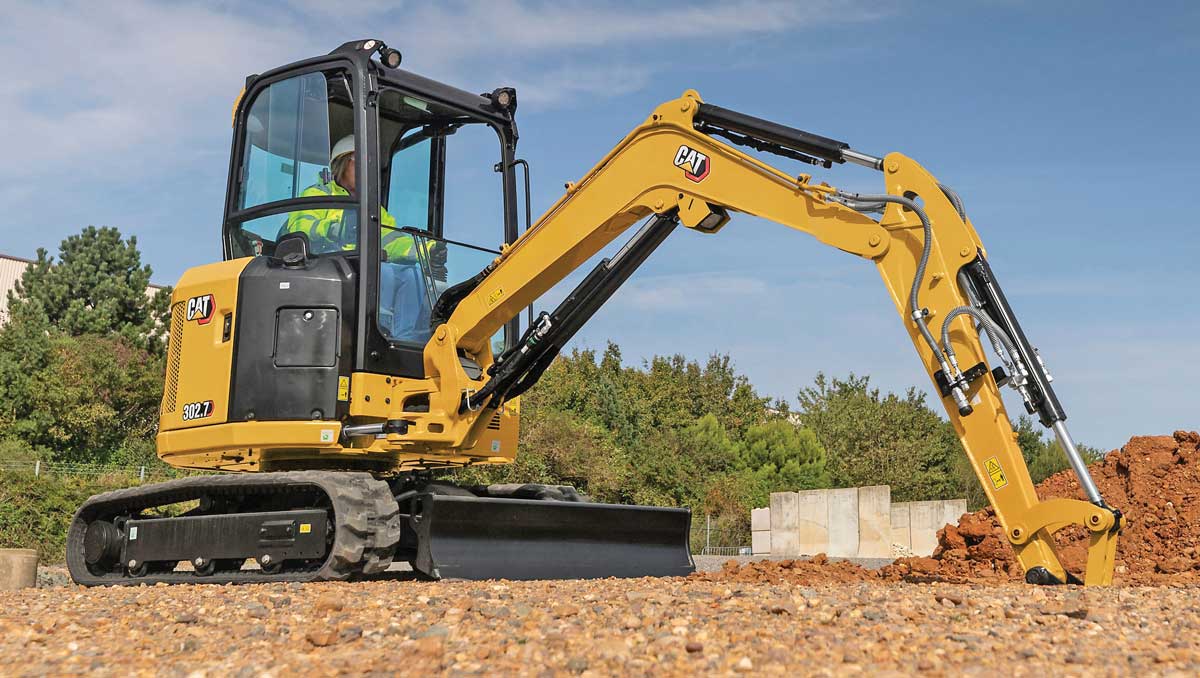Digging in the Cold: Tips for Winterizing Your Compact Excavator

As winter approaches, business slows down for many contractors who live in areas where freeze laws prohibit earthmoving activity. Whether or not you continue operating through the winter months, winterizing your construction equipment is crucial for protecting your investment in those machines and the future business they represent. Despite its size, a compact excavator requires the same maintenance and care as its larger counterparts. With all the same components of standard-sized excavators, a compact machine demands proper maintenance to get through the winter and achieve the desired service life.
Batteries
If your compact excavator goes unused for a long period of time, you will need to properly store the battery away from frigid temperatures. Batteries can lose up to 35 percent of their power at 32 degrees F and as much as 60 percent at 0 degrees F. To prevent the battery from draining in the cold temperatures, you should test its voltage before storing it inside.
Track Tension
A frequently overlooked service point on compact excavators is track tension. Most models have rubber tracks, which must be kept properly adjusted to maximize longevity and minimize wear on the track and its components. Winter can be particularly tough on rubber tracks, with extreme cold, snow, ice and sloppy ground conditions, so extra vigilance is recommended.
A track running loose will accelerate wear, causing unnecessary downtime and put a stop to production for the reinstallation of a new track. On the other hand, a track running too tight will cause the rubber material to tear and will greatly increase wear on the other track system components, including traction motors, sprockets and front idlers. Operators should always refer to the operator’s manual and check track sag measurements on a regular basis to ensure the track tension is correct.
Grease Points
Grease is the lifeblood of all pins and bushings. As a general rule, operators should grease all pins and bushings daily, making sure to have a good grease coverage for winter. The operator’s manual will identify each grease point and provide recommendations for quantity and grade of grease. If multiple operators are using a single machine, you can mark less obvious grease points with orange marking paint to remind all users to perform this task.
As with under-greasing, over-greasing can also be problematic. One to three shots of grease are typically plenty to do the job. Using more wastes money, presents a potential environmental hazard and can cause a considerable mess.
The Gearbox
The propel drive gearbox, one of the most vital components of a machine’s performance, is often neglected when it comes to servicing. During winter, gearboxes may be covered in mud and snow, with the fill and drain plugs not visible. Gearboxes require an oil change at approximately 1,000-hour intervals, depending on the manufacturer. Propel drive gearboxes from some manufacturers may fail as early as 1,500 to 3,000 hours. Gearboxes for compact excavators may be small, but they are still expensive to manufacture because they have the same internal parts as their larger cousins.
You can change the gearbox oil quickly in most cases, as the typical gearbox oil capacity is a quart or less, so this maintenance step is a small investment that will pay off in the future.
Fuel and Additives
Using an anti-gelling additive in diesel fuel can improve your engine startup in cold weather. This also can improve cold flow by preventing gelling and will even clean deposits from fuel injectors, combustion chambers and intake valve deposits. These additives are readily available at any local dealership or service shop.
Change the fuel filters and fuel separator filters to be sure no moisture has been retained by the filters that might cause problems later on. Moisture in the engine can occur when the engine is hot and the outside temperatures are very cold. Moisture may especially form in the fuel when the equipment has been sitting. This can occur as quickly as sitting over the weekend. If the fuel does begin to gel, it’s quite possible that the gelled fuel will clog the fuel separator.

Oils and Coolants
Change the oils in your construction equipment before and after the winter months. During the winter, we suggest using low viscosity oils that will flow with less resistance. This includes oils for the engine, transmission, differentials and hydraulic system.
Most diesel engines today come with glow plugs or heating grids, which are nothing more than a similar type of element you see in electric heaters, but a bit more heavy duty. A heating grid preheats air going into the internal combustion chamber which heats up the engine to a suitable temperature for combustion. Otherwise, when cold fuel is sprayed into the chamber, it can gel and adhere to these parts. Hard starting and inefficient combustion have the potential to cause damage to plugs and cylinder heads.
Many diesels come equipped with built-in electric-powered block heaters to keep the engine block warm overnight. A diesel engine needs heat to ignite the fuel since there are no spark plugs. This heat comes from the compression of air in the cylinders. On startup in cooler temperatures, the heat from compression needs a little help; the grids provide this by heating the intake air.
Once the engine is running a while, the heat from combustion warms the cylinders and no additional heating is needed. However, when you live in colder climate areas you will also need to install oil pan heaters. An oil pan heater makes it easier to start the engine and preheats the engine oil. When cold, oil becomes very thick and difficult to pump. Upon startup when using an oil pan heater, warm oil is instantly pumped to the critical wear points in the engine. This protects engine components, extends battery life and reduces emissions. This also contributes to operator comfort inside the cab by allowing the engine to get hot sooner.
As for coolant, an ideal ratio is 50/50 coolant to water, but in cooler weather it is suggested that you try using a 70/30 ratio of coolant to water. This will prevent the water from freezing.
Proper winter care can add years of productive, efficient service to your compact excavators.




